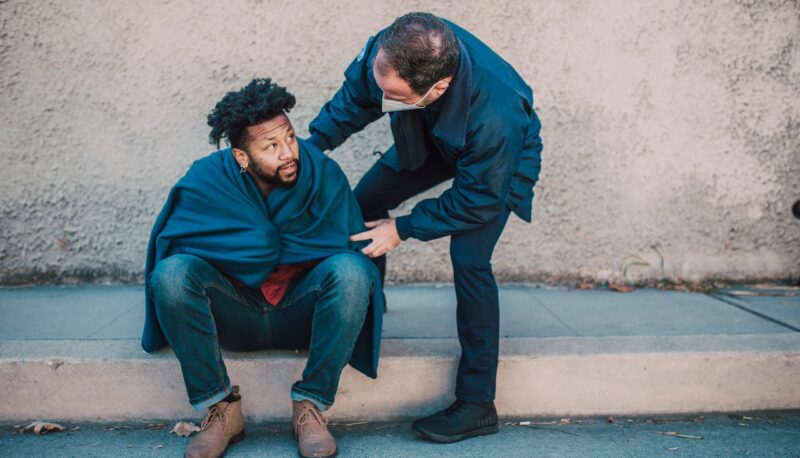Understanding why we need to reform our public safety systems is as simple as looking at how many people, often Black people, were killed by police last year. What can be more difficult is envisioning exactly what those reforms look like. As we examine the task of reforming our public safety systems, we must prioritize policy changes and approaches that support the communities most harmed by those systems.
Among other policy changes, community-focused approaches to public safety involve civilians leading the way, unarmed responses employed whenever possible, and community members having their voices heard throughout the process. Let’s look at those aspects of a community-focused public safety approach and why they’re so important to public safety reform.
Buy-In from Community Stakeholders
Public safety policy changes can face challenges from power struggles or lack of community support. That’s why securing input from stakeholders, including mayors, city councils, residents and police themselves is so important.
A well-designed public safety reform program is one in which officials and the community are on the same page and united in support of change. This can be a challenge, but for the community to benefit from public safety reform, community leaders must be on board.
The biggest group of stakeholders in a community-focused public safety plan is community members. Input from residents, through things like surveys and public forums, provides insight into what people want to change, and it demonstrates to community members that their voices are being considered in the planning process.
Civilians in Leadership Positions
Civilian oversight of public safety departments is crucial because civilians have valuable perspectives on public safety in their own communities, including how their communities view police. Those perspectives can help lead to more compassionate public safety policies and more equitable treatment of community members when they interact with public safety departments.
Civilian leaders should have backgrounds in social work, public health, or public administration, and they should demonstrate in-depth knowledge of the intersections of race, public health, and public safety. When we have knowledgeable, experienced civilian leaders in place, we remind our communities that there’s much more to public safety than just policing. We put the power back in the hands of the people and ensure individuals get help from responders who are well-trained in the full breadth of public safety work, not just policing.
Unarmed First Responders
A community-focused public safety plan also recognizes that many service calls do not require or are better served without armed responses. From mental health services to homelessness or substance abuse, many calls can be better handled through social services rather than armed police officers. This approach reduces strain on police departments, prevents unnecessary incarceration, and helps keep calls for help from turning into tragedies.
By increasing the number of unarmed first responders like EMTs and social workers, and deploying them where possible instead of armed police officers, we can help rebuild public trust between public safety departments and our communities.
All of these aspects of an effective, community-focused public safety approach take time, effort, and genuine commitment from stakeholders, but they’re necessary to ensure our communities are protected. This is just a small glimpse of what it will take to transform public safety—and you can always read more in our landmark report All Safe: Transforming Public Safety—but it shows that change is possible.
We owe it to our communities to bring in civilian leaders with the right expertise, utilize unarmed responders wherever possible, and secure buy-in from all stakeholders. We’ve got the vision for a community-focused approach to public safety. Now, all we have to do is make it happen.
